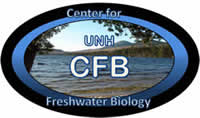Abstract
A study of Silver Lake, NH was performed as part of a 5-lake assessment of cyanobacteria prevalence and distribution. Multi-parameter fluorescence probe measurements of chlorophyll a and cyanobacteria concentrations (PC, phycocyanin fluorescence) were evaluated in addition to physical and chemical characteristics of the lake. Silver Lake did not exhibit summer stratification suggesting a recent mixing event. It had oligotrophic levels of Chlorophyll a (1.93 ± 0.06 mg L-1) and of TP (10.10 mg L-1), yet PC levels were the highest of all the lakes studied (248691 ± 963 Microcystis cell equivalents mL-1). The cyanobacteria Microcystis dominated the phytoplankton community. Microcystin levels varied from a mean 72.43 ± 21.21 pg mL-1 in transect water to 137.69 ± 46.9 pg mL-1 in sediment water. Chlorophyll distribution was rather homogeneous while cyanobacteria levels were highest towards the shallow, embayed NE part of the lake where a section of a State Park beach is located. Implications include potential increase in exposure to toxins by water users. Heterogeneous distribution of cyanobacteria emphasizes the importance of extensive sampling beyond pelagic sampling sites to more accurately inform decision-making regarding health and safety of water bodies.
Publication Date
1-1-2008
Publisher
UNH Center for Freshwater Biology Research
Document Type
Article
Recommended Citation
Morison, Françoise, "Occurrence and Distribution of Cyanobacteria and their Toxins
in Silver Lake, New Hampshire" (2008). Center for Freshwater Biology. 6.
https://scholars.unh.edu/cfb/6

